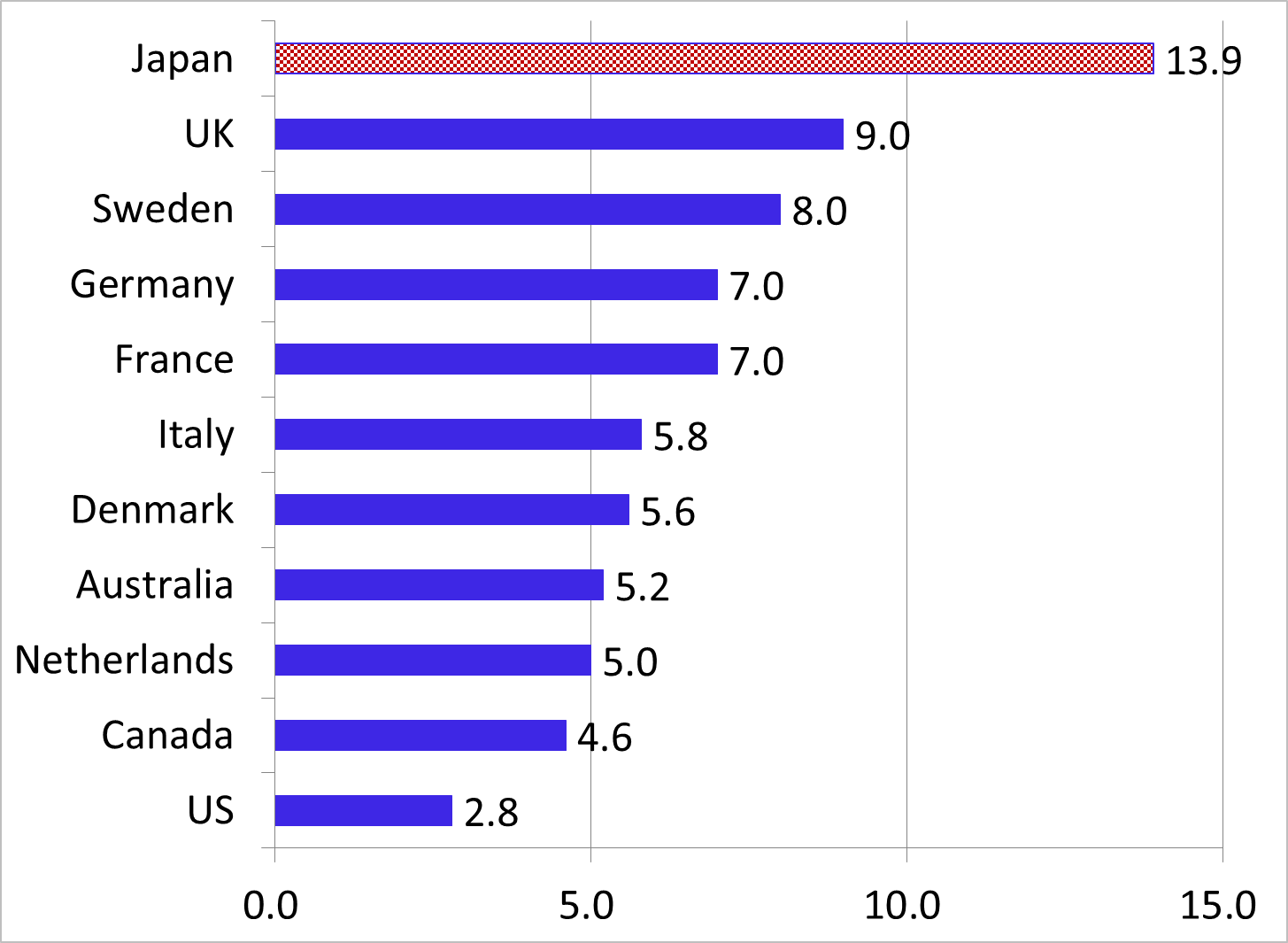Column Finance and the Social Security System 2018.03.05
【Aging, safety net and fiscal crisis in Japan】No.50: High Tuberculosis Notification Rate among Elderly People
According to the Global Tuberculosis Report 2017 published by the World Health Organization (WHO), TB is the leading cause of death from a single infectious agent, ranking above HIV/AIDS. It is estimated that 1.3 million people (HIV-negative) died from TB in 2016, along with another 374,000 TB deaths among people who were HIV-positive. The same year, another 10.4 million people were diagnosed with the illness.
In 1950 in Japan, 121,769 people died of TB. Thanks to vaccination and improved nutrition, after that the number of TB deaths plummeted, and by 2016, they were at 1,889. To make international comparisons, health and government officials use something called morbidity rate, which is the number of infected persons per 100 thousand in the population. In 1975 when I graduated from university, Japan's tuberculosis morbidity rate was 96.6, and it had dropped all the way to 13.9 by 2016. However, as shown in Figure 1, the TB morbidity rate in Japan was still higher than in other developed countries.
Figure 2 shows TB morbidity rate by age group in 2016. The rate of people aged 70 and over, who may have weakened immunity, was remarkably high. Reflecting this, news of outbreaks at residences of senior citizens is not uncommon. The number of newly diagnosed TB cases was 17,625 in 2016, and TB-related medical expenses were 24 billion yen in 2015.

(Note)Data of Japan is in 2016. Data of other countries are in 2015.
(Source)Ministry of Health, Labor and Welfare./World Health Organization

(Source)Tuberculosis Surveillance Center
